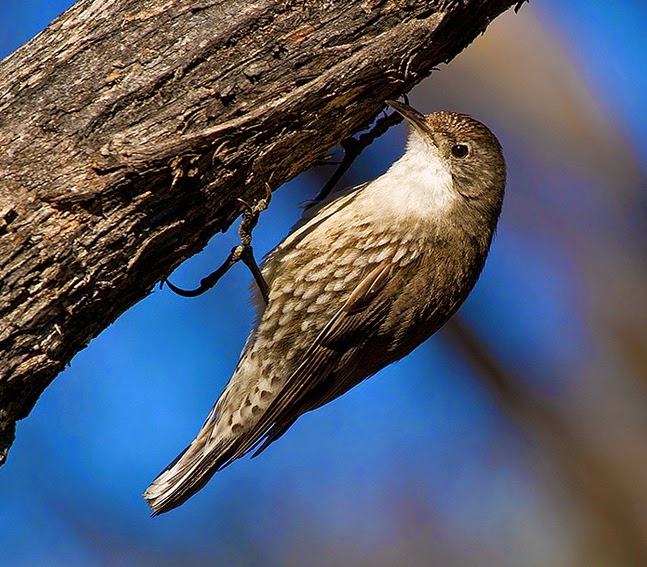 |
| (Photo from Flickr) |
Common name:
white-throated treecreeper (en); trepadeira-austral-de-garganta-branca (pt); échelet leucophée (fr); corretroncos gorjiblanco (es); weißkehl-baumrutscher (de)
Taxonomy:
Order Passeriformes
Family Climacteridae
Range:
This species is endemic to eastern Australia, being found from north-eastern Queensland south to Victoria, and west into south-eastern South Australia.
Size:
These birds are 13-17 cm long and have a wingspan of 19-26 cm. They weigh 22 g.
Habitat:
The white-throated treecreeper is found in various forest habitats, including tropical and sub-tropical rainforests, dry tropical forests, dry savannas and temperate forests. They occur at altitudes of 300-1.200 m.
Diet:
They mainly search for insects and other invertebrates on tree bark and dead wood, particularly ants and spiders, occasionally also taking sap from Acacia or Eucalyptus, and nectar from flowers.
Breeding:
White-throated treecreepers are socially monogamous and breed in August-January. They nest in a tree cavity, about 2 m above the ground, which the female lines with bark, fur and grass. There she lays 2-4 white eggs with sparse brown or purple specks, which she incubates alone for 21-22 days. The chicks are fed by both parents and fledge 25 days after hatching. Each pair raises 1-2 broods per season.
Conservation:
IUCN status – LC (Least Concern)
This species has a large breeding range and is reported to be locally common. The population is suspected to be stable in the absence of evidence for any declines or substantial threats.







